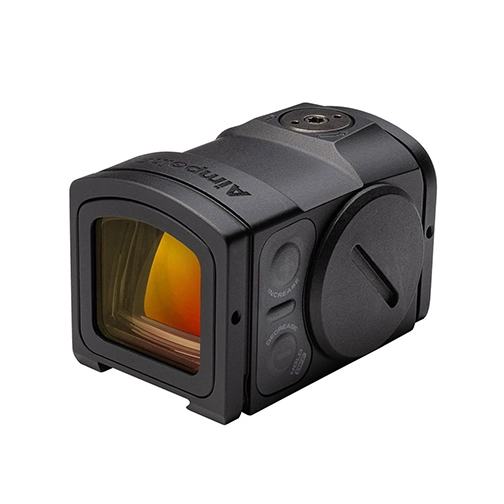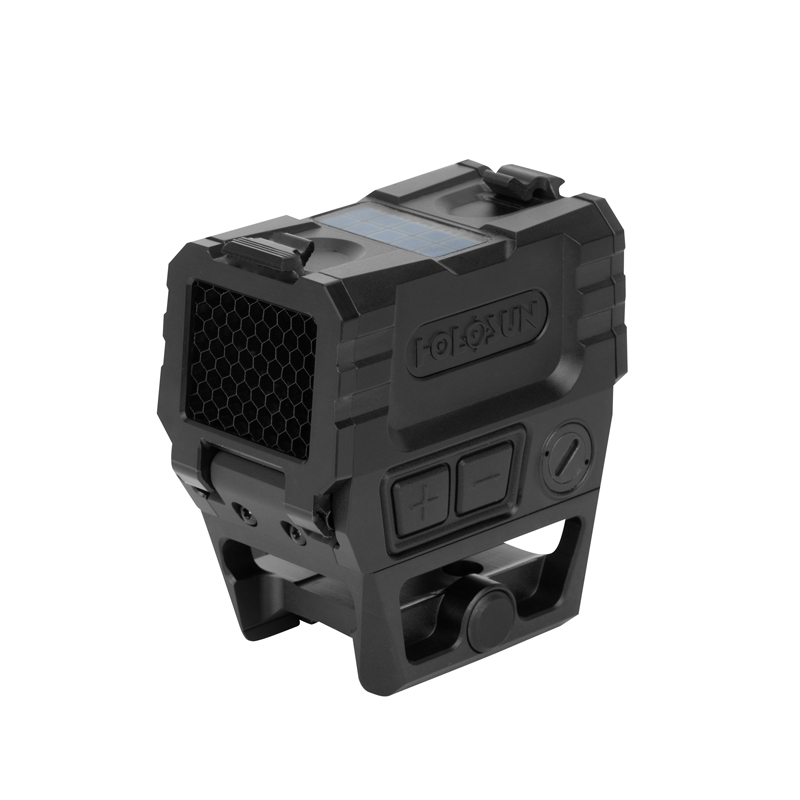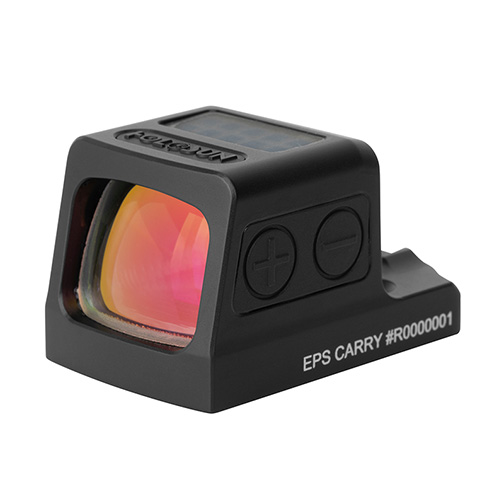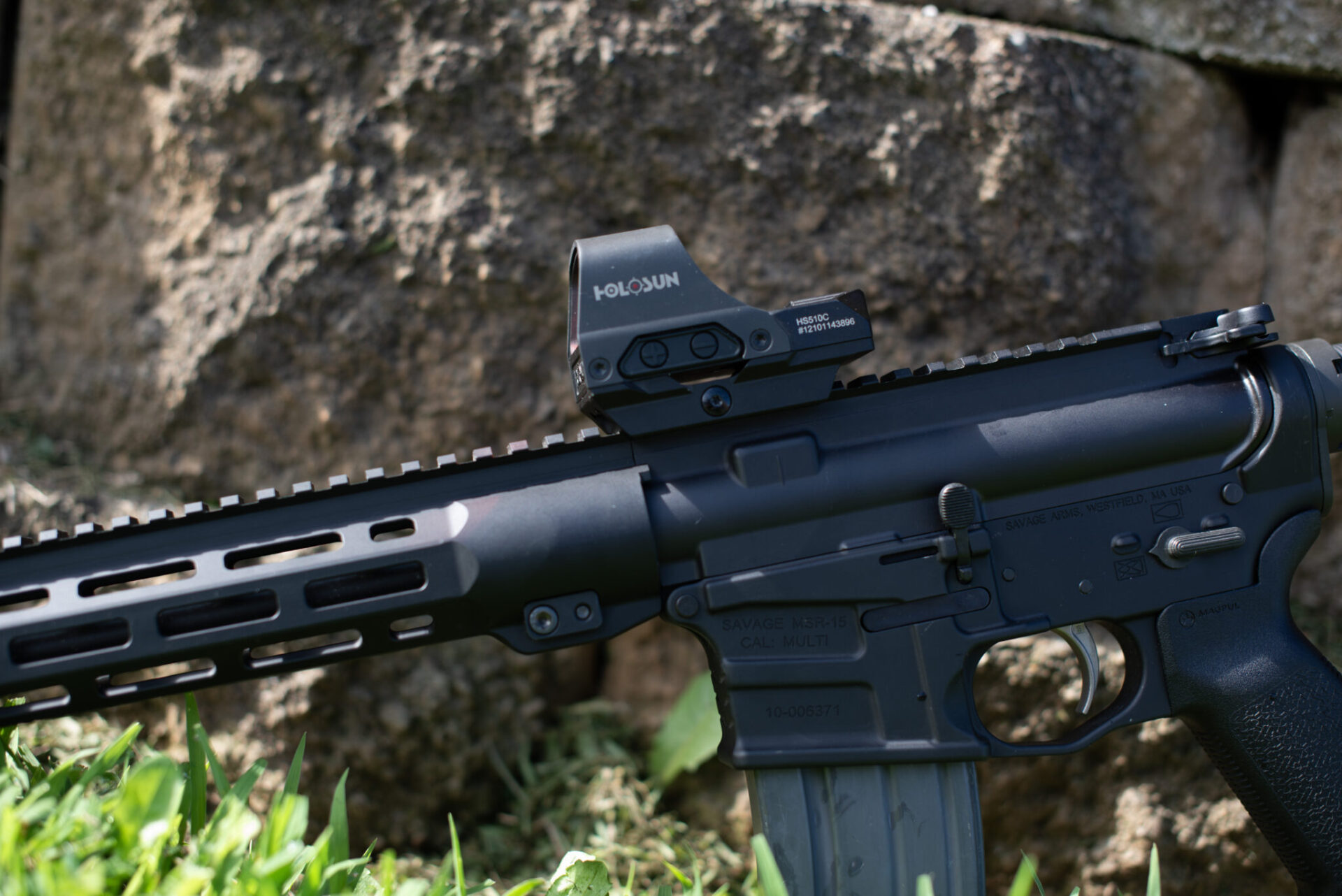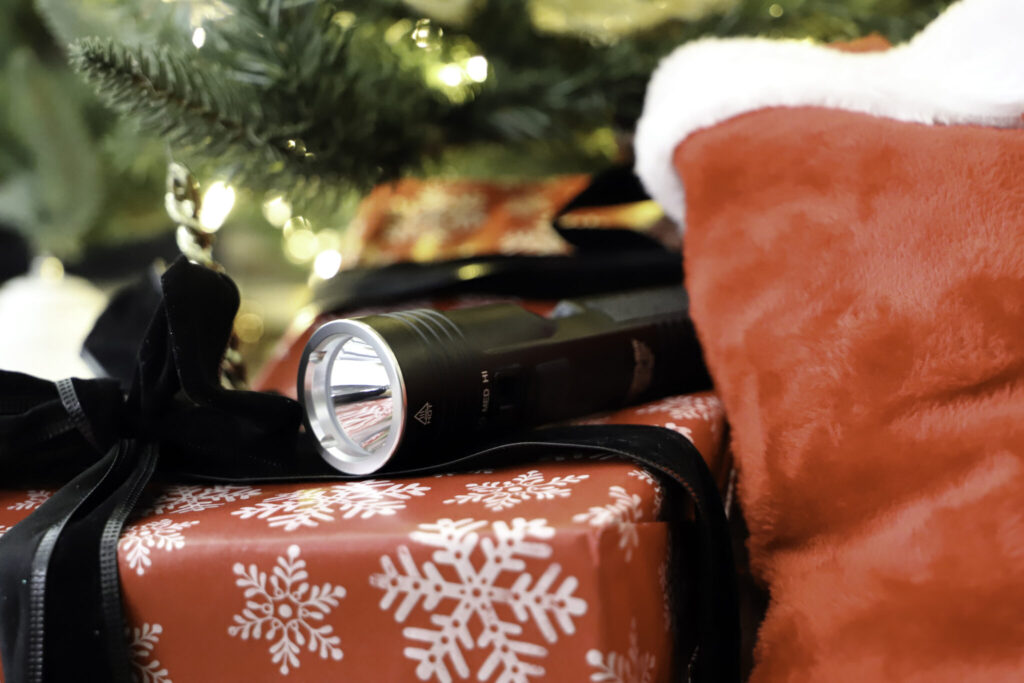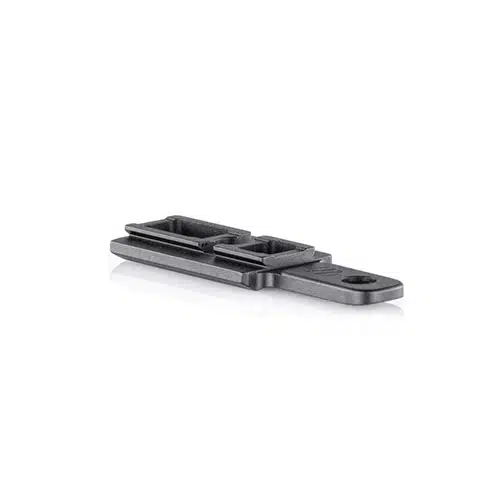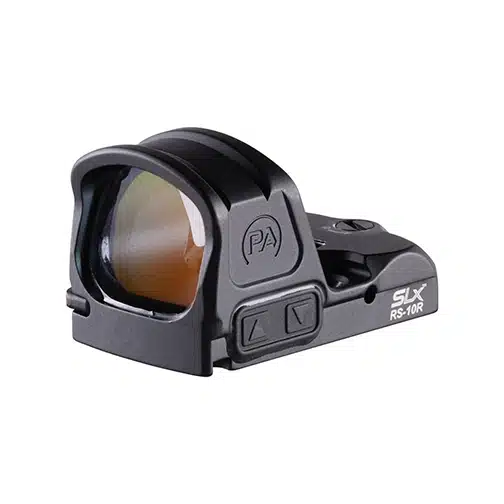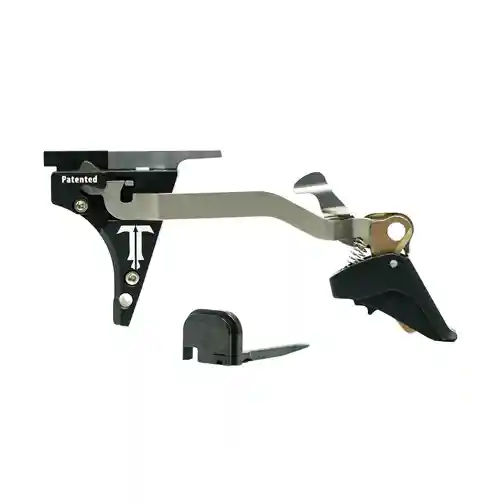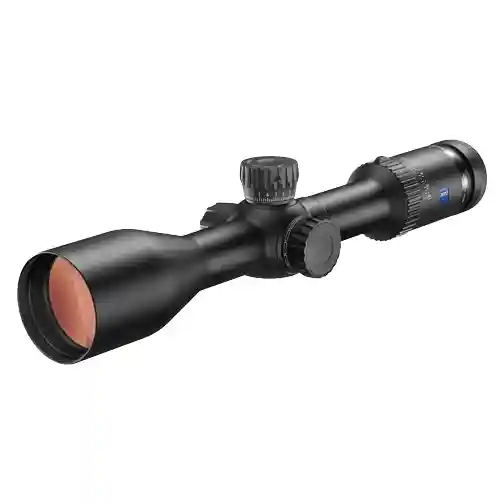In the world of precision shooting and rapid target acquisition, the red dot sight reigns supreme. These optics, often seen on the firearms of competitive shooters, law enforcement personnel, and sports enthusiasts, offer a streamlined and efficient aiming solution. But to tap into the full potential of a red dot sight, it’s essential to ensure it’s accurately sighted in. An improperly calibrated sight could mean the difference between a bullseye and a missed shot.
So, what exactly is a red dot sight? At its core, it’s an electro-optical device designed to superimpose a reticle (often a small dot) over your target, simplifying the aiming process. Whether it’s a reflex sight, a holographic sight, or a prismatic sight, the principles remain the same. When sighted in correctly, the red dot aligns the point of aim with the point of impact, ensuring your shots land where intended.
Enter Kenzie’s Optics. As a beacon of excellence in the optics world, we’re more than just a retailer. With a diverse range of products, from scopes and reflex sights to night vision equipment, we pride ourselves on offering only the best. Our expertise in this domain isn’t merely about sales; it’s about passion, innovation, and a relentless pursuit of perfection. When it comes to understanding the nuances of red dot sights and other optical devices, Kenzie’s Optics stands unparalleled.
In this guide, you’ll embark on a journey of discovery. We’ll demystify the process of sighting in a red dot sight, offering invaluable tips, expert insights, and a step-by-step guide to achieving unparalleled accuracy. So, whether you’re a seasoned competition shooter or someone just starting on their shooting journey, there’s something here for everyone. Welcome to the world of precise shooting, brought to you by Kenzie’s Optics.
Understanding the Basics of Red Dot Sights
Venturing deeper into the domain of optics, let’s shed some light on the heart of our topic: red dot sights. While many recognize the name, not all understand the intricate details and variations that exist within this category.
Types of Red Dot Sights
There are primarily three types of red dot sights:
- Reflex Sights: Often the most popular among the trio, reflex sights or reflector sights, use a lens and a light source, allowing the shooter to see the reticle (usually a red dot) superimposed over the target. These are particularly known for their fast acquisition and unlimited eye relief, making them a favorite for many.
- Holographic Sights: These sights employ a more complex technology. Instead of reflecting an LED light back to the shooter’s eyes, a hologram of a reticle is embedded in the sight glass. Widely recognized for their precision, they are a choice for many competition shooters.
- Prismatic Sights: Standing a bit apart from its peers, prismatic sights use prisms instead of lens systems to magnify the image. They often come with an etched reticle, allowing them to function even without battery power. Their built-in magnification properties can make them more suitable for medium-range shooting.
Beyond the classic red, there’s also the Green Dot option. While the color choice often boils down to personal preference, some shooters find the green dot easier to see in bright daylight conditions.
Features to Consider
Every red dot sight boasts a myriad of features, and here are some that stand out:
- Brightness Settings: From manual mode where you control the brightness level to auto-brightness mode which adjusts based on ambient light conditions, ensuring that your reticle is visible against your target is paramount.
- Battery Life: From sights that offer a mere few hours of use to those boasting over 50,000 hours of battery life, knowing how long your sight will last in the field is essential. Remember, a sight is only as good as its power source.
- Construction: Aluminum housing isn’t just for aesthetics; it ensures your sight remains rugged and resistant to the harshest of conditions.
In essence, red dot sights are more than just aiming tools. They’re a blend of technology, innovation, and precision, each tailored to meet specific needs. And as you journey through the world of red dots, remember that at Kenzie’s Optics, our commitment is to ensure you find the perfect match for your shooting adventures.
Step-by-Step Guide to Sighting in a Red Dot
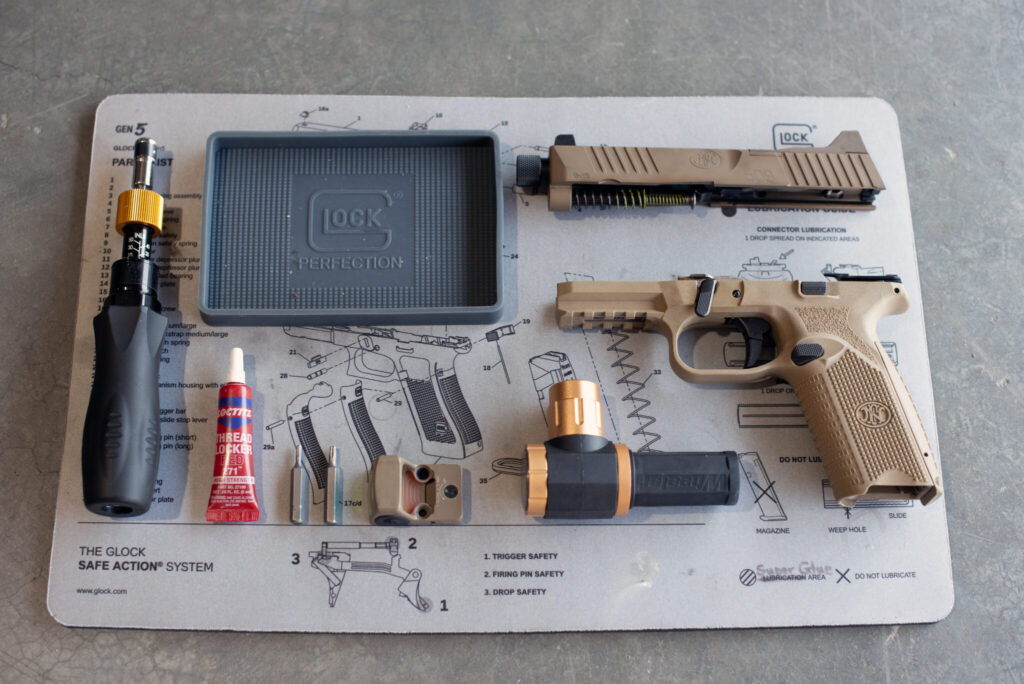
Precision in shooting isn’t just about skill; it’s also about having equipment that’s perfectly calibrated to your needs. Now that we’re acquainted with the basics of red dot sights, let’s delve into the heart of the matter: the process of sighting in your red dot sight. When done correctly, this process ensures that your point of aim matches your point of impact, leading to a more accurate and satisfying shooting experience.
Initial Preparation:
- Choosing an Aiming Point: Before beginning, set up a clear target with a defined aiming point. Whether it’s a paper target or something more advanced, having a clear point to aim for is crucial.
- Desired Distance Setting: The distance at which you sight in your red dot sight will depend on your shooting needs. For most general purposes, 25 to 50 yards is a good starting point. However, ensure the target is placed under good light conditions to avoid reflections and false readings.
- Mounting Your Red Dot: Ensure your red dot sight is securely mounted on your firearm’s Picatinny rail or any other mounting system you might be using. Any wobble or misalignment here can lead to inaccuracies later.
Bore Sighting:
Bore sighting is a preliminary method that helps you get on paper quickly, making the rest of the sighting process smoother.
- Remove the bolt or the slide of your firearm to look straight down the barrel.
- Manually align your firearm so that you have the target centered when looking down the bore.
- Without moving the firearm, adjust your red dot until it sits atop the aiming point on your target. Bore sighting tools available at Kenzie’s Optics can simplify and refine this process further.
Windage and Elevation Adjustments:
- Take a Test Shot: Fire a group of three shots at your target. This will give you an average spot where your rounds are impacting.
- Elevation Adjustment: Using the elevation adjustment knob, modify the vertical positioning of the red dot. If your shots are low, raise the dot, and vice versa.
- Windage Adjustments: Similarly, use the windage adjustment knob to tweak the horizontal alignment of the dot. If your shots are to the left, move the dot to the right, and so forth.
Confirming Accuracy:
- After making your adjustments, fire another set of three shots.
- Analyze the point of impact and see if it aligns with your aiming point. If not, repeat the adjustment steps until satisfactory alignment is achieved.
- Once dialed in at a closer range, test the red dot sight at different distances to ensure consistency and accuracy across various ranges.
Expert Tip: For those keen on precision, using a laser pointer or bore sight from Kenzie’s Optics can dramatically increase efficiency, especially when initially aligning your red dot with your firearm’s bore. The process might seem tedious, especially for beginners. Still, it’s a vital step in ensuring that your red dot sight functions as an extension of both your firearm and your vision.
Tips for Optimizing Red Dot Sight Performance
Achieving pinpoint accuracy with your red dot sight is just the beginning. To sustain and even elevate the performance of your sight, you’ll need to incorporate certain practices into your shooting routine. At Kenzie’s Optics, we’re not only dedicated to providing the best in optics but also ensuring you get the most out of them. Here are some expert-approved tips to enhance your red dot experience.
- Regular Maintenance:
Just as a rifle requires cleaning and upkeep, so does your red dot sight. Ensure the lens is always clear of dirt, fingerprints, or any obstructions. Specialized cleaning solutions and cloths, like those available at Kenzie’s Optics, can be beneficial.
- Understanding Parallax:
While red dot sights are often advertised as “parallax-free”, they aren’t entirely devoid of this optical illusion. Always ensure your eye is centered with the optic, especially at longer distances, to minimize parallax errors.
- Battery Management:
Regularly check and replace the batteries of your sight. Even with sights boasting extensive battery life, it’s a good practice to change batteries annually or before any critical event, like a competition.
- Co-Witnessing with Iron Sights:
For added redundancy, consider setting up your red dot to co-witness with your firearm’s iron sights. This means if your red dot fails for any reason, you have the iron sights aligned and ready as a backup.
- Use the Right Dot Size:
Red dot sights come with different dot sizes, often measured in MOA (Minutes of Angle). A smaller dot like 1 MOA is great for precision, while a larger dot, say 3 or 4 MOA, is quicker for target acquisition, especially in close quarters.
- Optimal Brightness Setting:
Adjust the brightness of your dot according to your environment. A dot that’s too bright can cause a halo effect, whereas a dot that’s too dim might get lost against a bright backdrop. Remember, the dot should be clear enough to spot instantly but not overwhelmingly bright.
- Train with Different Light Conditions:
The environment plays a crucial role in how you perceive the red dot. Regularly train in different light conditions – from the bright midday sun to low-light evening settings, and even with artificial night vision devices, to ensure versatility and preparedness.
- Know Your Red Dot’s Limitations:
While red dots excel in rapid target acquisition and close to mid-range shots, they might not be the optimal choice for very long-distance shooting. It’s essential to recognize when another optic, like a magnified scope, might serve you better.
- Safety First:
Always remember, while aiming and sighting are important, safety should never be compromised. Avoid harmful situations like pointing at reflective surfaces that could redirect the laser or keeping the sight on when not in use.
The Kenzie’s Optics Advantage: Elevate Your Aiming Game
Having delved deep into the world of red dot sights, from understanding its foundation to perfecting its calibration and optimization, there’s one vital component left to address: choosing the right equipment. At this juncture, the significance of a trusted partner, both in terms of expertise and product quality, becomes paramount. Here’s where Kenzie’s Optics takes center stage:
- Extensive Product Range
- Quality Assurance
- Knowledgeable Staff
- Cutting-Edge Accessories
- Safety is Paramount
- Continuous Learning and Support
- Versatility for Every Shooter
The journey to mastering the art of shooting is thrilling, filled with learning curves, challenges, and rewards. As you stride forward, make sure you have the right partner by your side. With Kenzie’s Optics, you’re not just investing in a product but a promise of excellence, precision, and unwavering support.
Remember, in the world of shooting, while skill is paramount, the right tools can make all the difference. Choose wisely, shoot safely, and always aim for perfection with red dot optics.
